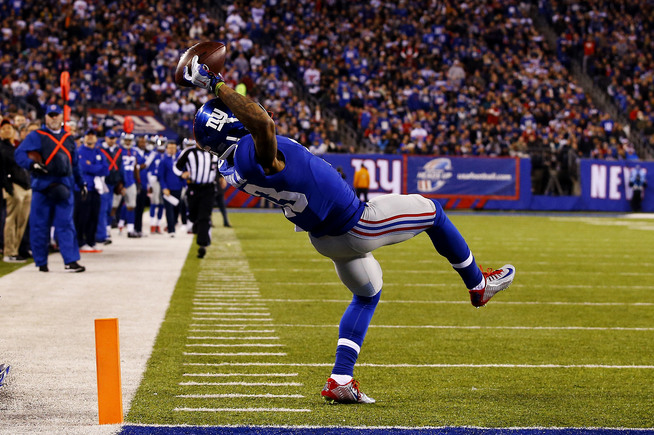Reception Perception: Data Results from Year 1
By: Matt Harmon
July 13th, 2015
July 13th, 2015
After taking my new job with NFL.com, the game changed for Reception Perception. Frankly, the project took more of a backseat than I wanted it to, but such is the reality of a move across the country. I wanted to put out a lengthy book, and a large field data sample. Unfortunately neither is likely to happen, although a brief book may still come out, but nevertheless it is important to share a data sample of at least a portion of the players I charted. Luckily, I had some big help to accomplish this goal. A fellow football twitter member who now does great work with hockey statistics and analysis, Spencer, reached out to me and offered to bring the Reception Perception data to life with a series of tables. I sent him a portion of the sample of the players put through the process this offseason, and Spencer came up big. He put together a table illustrating the following Reception Perception analytics:
- Sample size - Eight games (must play at least 20 snaps) of an NFL season (smaller samples for college prospects). The four best, and four worst statistical games are included to create a usable, and fair assessment base of a receiver's performance.
- Route Percentage – how frequently a receiver runs each pattern on the route tree. A route only "qualifies" if the sampled receiver could have realistically caught a pass on it. Example: plays where a receiver runs down the field while the quarterback throws a pass on a screen immediately to a teammate do not count as routes in Reception Perception. They are thrown out, and do not affect any totals or scores.
- Success Rate vs. Coverage (SRVC) scores – how often a receiver got open against the defenders covering him. A success is charted when a receiver "gets open" against the coverage. Creating separation, enough for the quarterback to have a reasonable target for the quarterback, is marked as a success. The only plays that are automatically given as success to the receiver are instances where a receiver is obviously held or interfered with (called or not). These plays make a big difference to an offense, and signify a receiver winning yards for his team by forcing the defensive back to hold him. There are five formats for SRVC scores:
- SRVC against zone
- SRVC against press
- SRVC against double coverage
- SRVC on each type of route run
- Alignment Data – charting where a receiver lined up on each snap (slot, outside right, outside left or in the backfield), and whether they were on the line of scrimmage or not. This helps give a quantifiable picture of what receiver position the play is often used in (slot, X-receiver, flanker).
- Contested catch conversion rate - how often a receiver comes down with a pass in a contested situation.
With this table, you will be able to look up an individual player's Reception Perception stats, the current NFL average collected, how a player's data falls along percentiles against his peers in this sample, and (my personal favorite) compare two receivers' data side-by-side. Please contact me on Twitter if you have questions.
Hopefully this table illustrates to you some of the Reception Perception work done this offseason. I want to sincerely extend my gratitude to you all for supporting the project this offseason. Reception Perception went to heights that I never could have imagined this offseason, and I have you all to thank for that. We aren't done yet, not even close, and I look forward to sharing more Reception Perception findings with you in the comings months and years.
Comment Form is loading comments...

